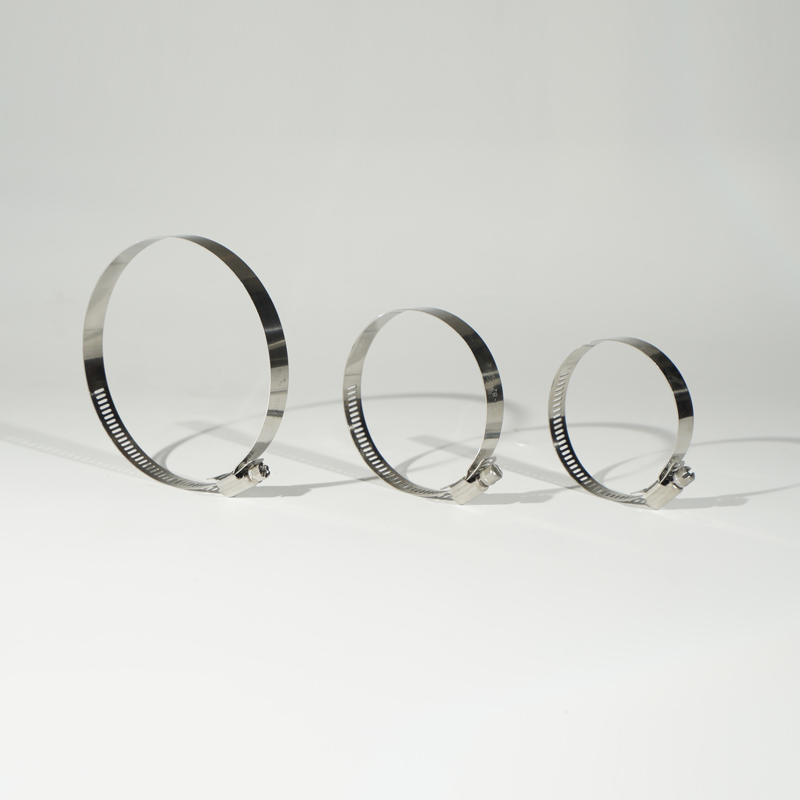- Phone:+86-17331948172 +86-0319-8862898
- E-mail: inquiry@puxingclamp.com
Dec . 05, 2024 10:52 Back to list
Manufacturers of Constant Tension Spring Band Hose Clamps and Their Solutions
Understanding Constant Tension Spring Band Hose Clamps A Guide to Manufacturing and Applications
In the world of industrial and automotive components, hose clamps play a crucial role in securing hoses to fittings, preventing leakage and ensuring optimal performance. Among the various types of hose clamps, constant tension spring band hose clamps stand out for their unique design and reliability. This article explores the manufacturing process of these clamps, their applications, and the benefits they offer.
What are Constant Tension Spring Band Hose Clamps?
Constant tension spring band hose clamps are designed to maintain a consistent clamping force on hoses, regardless of changes in temperature, pressure, or hose material. They are often constructed from high-quality stainless steel, which provides corrosion resistance and durability. The design typically features a spring mechanism that allows the clamp to expand and contract in response to the varying dimensions of the hose, ensuring a secure fit at all times.
Manufacturing Process
The production of constant tension spring band hose clamps involves several key steps. These include material selection, forming, heat treatment, surface finishing, and quality control.
1. Material Selection The choice of material is critical in manufacturing hose clamps. Stainless steel (often type 301 or 302) is preferred for its strength, durability, and resistance to corrosion. In some cases, manufacturers may also use alloy steels or other materials depending on the specific application.
2. Forming The clamp's band is created through a process called stamping, where flat sheets of metal are shaped into the required band form. This process can include bending, cutting, and shaping to achieve the desired dimensions. Precision in this phase is crucial as it defines the clamp's effectiveness and ability to maintain constant tension.
3. Heat Treatment After forming, the clamps undergo heat treatment to enhance their mechanical properties. This process strengthens the metal, making it more resistant to deformation under pressure. Heat treatment also helps to relieve any stresses introduced during the forming process.
4. Surface Finishing A surface finish is applied to the clamps to improve their corrosion resistance and aesthetic appeal. Common finishing techniques include passivation, anodizing, or coating with protective layers. These treatments not only enhance longevity but also ensure that the clamps are suitable for use in various environmental conditions.
constant tension spring band hose clamps factories

5. Quality Control After the production process, each batch of hose clamps undergoes rigorous quality control testing. This may include dimensional checks, tensile strength tests, and leak tests to ensure that each clamp meets the required specifications. Quality assurance is vital to prevent failures that could lead to leaks or component damage in critical applications.
Applications
Constant tension spring band hose clamps have a wide range of applications across various industries. One of their most common uses is in the automotive sector, where they secure hoses in engines, cooling systems, and fuel lines. The ability of these clamps to maintain consistent pressure makes them ideal for high-temperature and high-pressure environments.
In addition to automotive applications, these clamps are used in aerospace, marine, and industrial settings. Their reliability makes them suitable for securing hoses in hydraulic systems, fuel delivery systems, and various other machinery. Furthermore, they are often favored in applications where space is limited, as their low-profile design can fit into tight areas without compromising performance.
Benefits of Constant Tension Spring Band Hose Clamps
The advantages of using constant tension spring band hose clamps are numerous
1. Reliability Their design allows for a consistent clamping force, reducing the risk of leaks. 2. Versatility Suitable for various applications, these clamps can handle different hose materials and sizes.
3. Durability Made from high-quality materials, they are resistant to wear and corrosion, ensuring a longer lifespan. 4. Ease of Installation Their design allows for quick and easy installation without the need for special tools.
5. Cost-Effectiveness With their long-term reliability and reduced maintenance needs, constant tension spring band hose clamps can lead to cost savings over time.
In conclusion, constant tension spring band hose clamps are essential components in a variety of applications due to their unique design and reliable performance. Understanding the manufacturing process and the benefits they provide can help industries make informed choices when selecting hose clamps for their specific needs. With advancements in technology and materials, these clamps will continue to evolve, ensuring they meet the demands of modern applications.
-
Large Stainless Steel Adjustable American Type Hose Clamp - Hebei Pux Alloy Technology Co., Ltd.
NewsAug.06,2025
-
High Quality Steel Midsole - EN Standard for Safety Shoes
NewsAug.06,2025
-
Large Stainless Steel Adjustable American Type Hose Clamp - Hebei Pux Alloy Technology|[Corrosion Resistance]&[Adjustable Design]
NewsAug.06,2025
-
Large Stainless Steel Adjustable American Type Hose Clamp - Hebei Pux Alloy Technology Co., Ltd
NewsAug.05,2025
-
Large Stainless Steel Hose Clamp - Hebei Pux Alloy Technology Co., Ltd | Corrosion Resistance, Adjustable Design
NewsAug.05,2025
-
Large Stainless Steel Adjustable American Type Hose Clamp - Hebei Pux Alloy Technology Co., Ltd | Corrosion Resistance&Adjustable Design
NewsAug.05,2025




